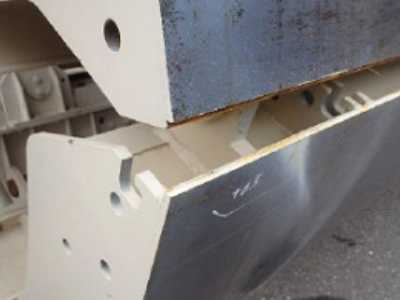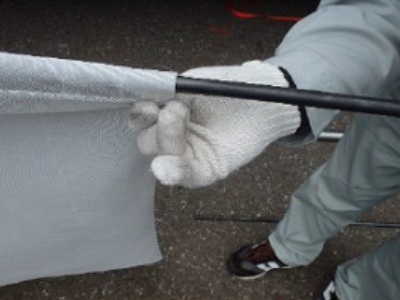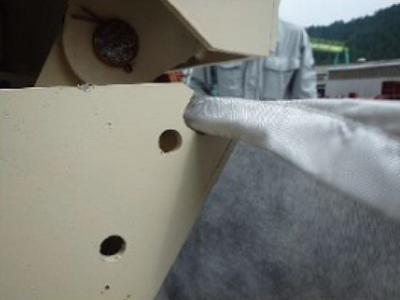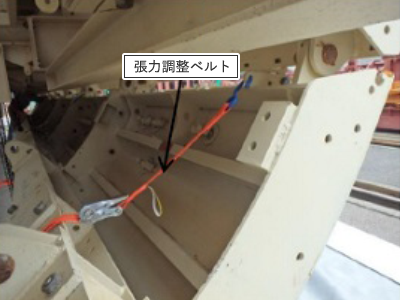Upgrading the Quality of Lining Concrete Layer
Together with Gifu Kogyo Co., Ltd. and Maeda Kosen Co., Ltd we have devised a method of installing water-permeable sheeting to formwork for tunnel lining concrete*. This technology uses water-permeable sheeting to upgrade the quality of the lining concrete surface layer. When building mountain tunnels, blister marks and sand streaks can easily occur near road level on the surface of the lining concrete, reducing its durability. Water-permeable formwork (water-permeable sheeting tacked onto the formwork) is widely used for such structures as bridge supports and diaphragm walls, eliminating problems caused by blisters and moisture, but up to now it has been difficult to install water-permeable sheeting to the large-sized curved steel formwork used for tunnel lining concrete. With the development of this method blister marks and sand streaks are eliminated, improving the quality and fine finish of the concrete surface.
* Concrete walls are installed to the interior surface of tunnels to maintain stable tunnel function. They are formed by feeding wet concrete into a void created between the tunnel’s rough surface and steel formwork.
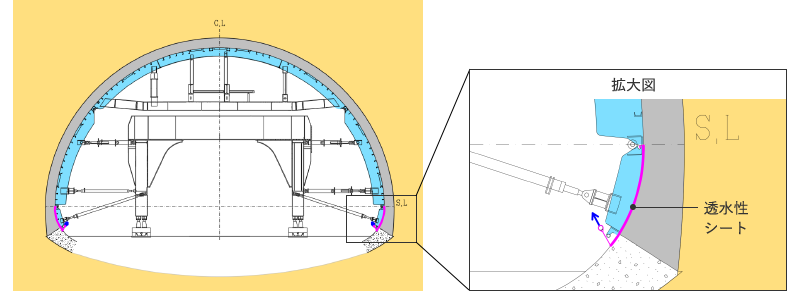
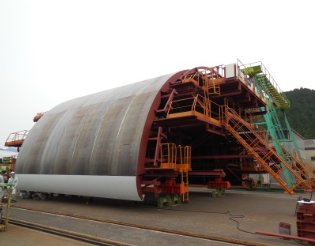
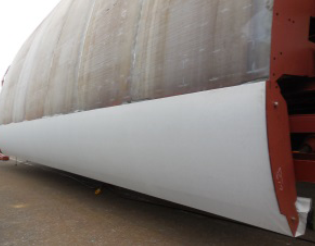
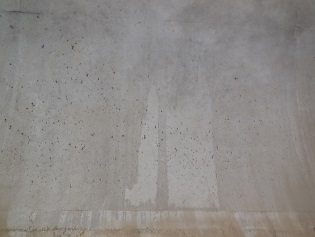
Blister marks on the lining surface with the conventional method.
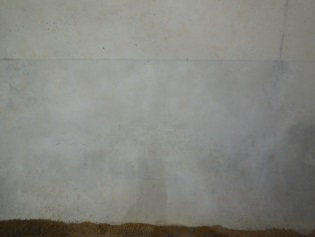
No blister marks visible on the lining surface where water-permeable formwork used.
Features
- With an improved seal between the water-permeable sheeting and steel formwork, no creases or kinks develop.
- The finer finish of the concrete surface boosts the lining’s durability.
- Having no marks on the concrete improves the appearance of the tunnel lining.


